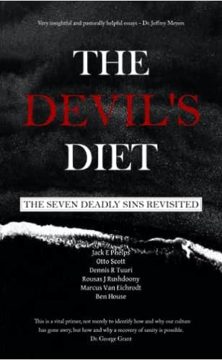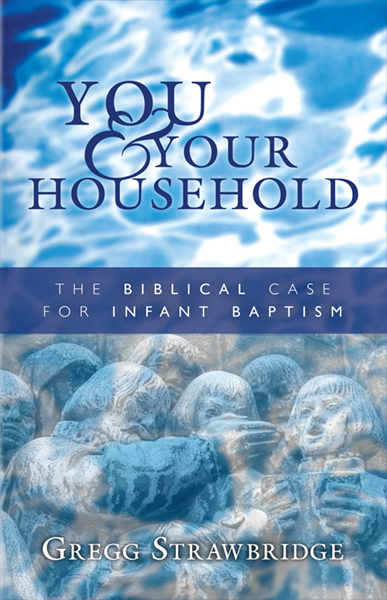Introduction
The first three gospels – Matthew, Mark, and Luke – are called the “Synoptic Gospels” because they each give a similar synopsis of Jesus’s life and ministry.
The fourth gospel – John – is noticeably different. In many cases, John gives more or less information than the Synoptics. For example, John gives a longer time frame than the others, with three years of Jesus’s ministry accounted for.
The differences between John and the Synoptics sometimes pose chronological difficulties. One example is the timeline of Jesus’s crucifixion with two main problems to reconcile.
The problems
Problem #1: The Synoptics indicate that Passover began the night before Jesus’s crucifixion, with Jesus eating the Passover (and instituting the Lord’s Supper) on the same night of his betrayal. Yet on the day of the crucifixion, John states: “Then [the Jewish rulers] led Jesus from Caiaphas to the Praetorium, and it was early morning. But they themselves did not go into the Praetorium, lest they should be defiled, but that they might eat the Passover” (John 18:28). This sounds as if Passover had not yet begun. John also states that the crucifixion and burial took place on the “Preparation Day of the Passover” (John 19:14).
This has caused various theories to arise, including a popular one that Jesus was crucified before Passover began and therefore at the same time the Passover lambs were being sacrificed. This view makes Jesus’s meal the night before an early Passover, or perhaps no Passover at all. Also, depending on which night Passover began, some posit that Jesus died on Thursday, not Friday.
Problem #2: Mark’s gospel says Jesus was crucified at the “third hour,” yet John says Pilate delivered Jesus to be crucified at “about the sixth hour” (John 19:14). The time-indicators clearly contradict if Mark and John were using the same telling of time. Jesus couldn’t have been crucified three hours before Pilate delivered him to be crucified.
Thankfully, these problems can be answered when all four gospels are studied together. We’ll begin with the Synoptic data and then compare with John.
Synoptic data
Matthew, Mark, and Luke are in agreement that Jesus must suffer, be killed, and raised on the third day (Matthew 16:21, Mark 8:31, Luke 9:22).
Matthew, Mark, and Luke agree that Jesus ate the Passover and instituted the Lord’s Supper in the evening of the first day of Unleavened Bread (Matthew 26:17-21, Mark 14:12-18, Luke 22:7-16). Jesus was subsequently betrayed, arrested, and put on trial later that same night, lasting into the next morning.
- Note: Passover was the start of the feast of Unleavened Bread, which lasted 7 days (Deuteronomy 16:1-4). The two terms were used interchangeably (Luke 22:1, “The feast of Unleavened Bread drew near, which is called Passover”). Luke 22:7 explicitly states that this day was “when the Passover must be killed.”
Matthew, Mark, and Luke agree that Jesus was crucified and buried the day before the Sabbath (Matthew 27:59-63, Mark 15:42-43, Luke 23:50-54). We know the Sabbath was on Saturday, the seventh day of the week. This means Jesus was crucified and buried on Friday, and Passover was the evening before on Thursday. Thursday was therefore the day that the Passover lambs were sacrificed.
- Note: The Synoptics refer to the day before the Sabbath (Friday) as the “day of preparation,” or “preparation day,” or the “preparation.” This will be important when we compare with John.
Mark alone says that Jesus was crucified in the “third hour” (Mark 15:25). According to Jewish time, this would’ve been at 9 a.m.
Matthew, Mark, and Luke agree that there was darkness from the sixth hour to ninth hour, and that Jesus died in the ninth hour (Matthew 27:45-50, Mark 15:33-37, Luke 23:44-46). From Mark’s third hour to the ninth hour, Jesus was on the cross for six hours before dying. Darkness covered the land for the last three hours. According to Jewish time, Jesus suffered on the cross from 9 a.m. to 3 p.m., with darkness from 12 p.m. to 3 p.m.
Matthew, Mark, and Luke agree that Jesus rose from the dead after the Sabbath, on the first day of the week, which is Sunday (Matthew 28:1, Mark 16:1-2, Luke 24:1).
Timeline of Synoptic data:
- Thursday afternoon – Passover lambs sacrificed
- Thursday evening – Passover eaten, Lord’s Supper, betrayal
- Friday morning – Crucified at 9 a.m.
- Friday afternoon – Darkness from 12-3 p.m., death at 3 p.m.
- Friday evening – Buried in tomb before sundown/Sabbath
- All day Saturday – Dead in tomb
- Sunday morning – Resurrected
Now, you might wondering: How should we count to get a “third day” resurrection? According to the Synoptics, Jesus was only in the tomb on Friday night and Saturday night. The solution is found in paying close attention to Jesus’s words. Jesus said he would “suffer, be killed, and rise on the third day.” The third day from what is the question. Jesus didn’t say he would rise “three days after being killed.” If so, we should expect a Monday resurrection! But Jesus’s meaning was that he would rise on the third day from when his sufferings began, which was Thursday night. The third day from Thursday is Sunday. Luke 24:18-21 makes this definitive: “The chief priests and our rulers delivered him to be condemned to death and crucified him…today is the third day since these things happened.”
Similarly, what about Matthew 12:40? Jesus said, “For as Jonah was three days and three nights in the belly of the great fish, so will the Son of Man be three days and three nights in the heart of the earth.” That seems to indicate three full days in the tomb. Because of this, some have theorized a Wednesday crucifixion. A common explanation of this verse is that Jesus didn’t literally mean three full days, rather he was using a Hebrew idiom for parts of days. That could be the case, but another option might work better. What if being in the “heart of the earth” wasn’t a reference to the tomb only, but to the entirety of his sufferings, which began on Thursday night? Thursday night, Friday night, and Saturday night give us at least three nights. This would mean that Jesus began his descent into the heart of the earth on Thursday, as he went to the center of Jerusalem being falsely tried by the Sanhedrin.
These are good examples of why we need to pay close attention to Jesus’s words. He didn’t say he would be in the “tomb” for three days and three nights. He said he would be in the “heart of the earth.” That gives us freedom to look at other possible meanings.
Comparing with John
Beginning of Passover. As we’ve noted, the Synoptics place Passover on Thursday night and refer to the day before Sabbath (Friday) as the “day of preparation,” or “preparation day,” or the “preparation.” This means that the “preparation” was for the Sabbath, not the Passover. When John says it was “the preparation day of the Passover” in John 19:14, he simply means it was the Friday during the Passover festival, with the preparation being for the Sabbath. This is abundantly obvious later in the same chapter (John 19:31, 42). John is therefore in agreement with the Synoptics on a Thursday night Passover and a Friday crucifixion.
But if Passover began on Thursday night, why does John say the Jewish rulers had not yet eaten the Passover on Friday morning? There are two possible solutions to this. (1) The “Passover” referenced here does not mean the Passover lamb, but rather the additional meals that would take place over the course of the week-long festival. In this view, the Jewish rulers would’ve eaten the Passover lamb on Thursday night, just as Jesus did. (2) The Jewish rulers did not eat the Passover when they were supposed to! They certainly weren’t obeying other parts of the law, why should we assume they were keeping Passover correctly? Perhaps they were supposed to eat it on Thursday night but failed to do so. Either way, there is no contradiction on this point between John and the Synoptics. Passover began the night before the Friday-crucifixion, which was Thursday.
Timing of Crucifixion. Mark says Jesus was crucified at the third hour, while John says Pilate delivered Jesus at about the sixth hour. The times can be reconciled if we consider that Mark was operating by a Jewish clock and John was operating by a Roman clock. A common historical claim is that the Jews numbered the hours from sunrise and the Romans from midnight. If true, that would make the Jewish third hour 9 a.m. and the Roman sixth hour 6 a.m. Thus, Pilate delivered Jesus to the Jews around 6 a.m. (“early morning,” John 18:28). Three hours later, Jesus was crucified on the cross at 9 a.m. To be clear, John’s gospel does not say that he’s using Roman time, neither does Mark’s about Jewish time. But this is the most reasonable solution that avoids contradiction. Other time-indicators in John make most sense with Roman time (10 a.m. in John 1:39, 6 p.m. in John 4:6, 7 p.m. in John 4:52).
Finally, John agrees with the Synoptics that Jesus rose from the dead on the first day of the week, which is Sunday (John 20:1).
Harmonized timeline:
- Thursday afternoon – Passover lambs sacrificed (Synoptics)
- Thursday evening – Passover eaten, Lord’s Supper, betrayal (Synoptics)
- Friday morning – Pilate delivered Jesus to Jews at 6 a.m. (John only)
- Friday morning – Jesus crucified at 9 a.m. (Mark only)
- Friday afternoon – Darkness from 12-3 p.m., death at 3:00 p.m. (Synoptics)
- Friday evening – Buried in tomb before sundown/Sabbath (4 Gospels)
- All day Saturday – Dead in tomb (4 Gospels)
- Sunday morning – Resurrected (4 Gospels)
Conclusion
As it turns out, the “problems” weren’t problems at all. These and other puzzles of the Bible are usually reconciled when we read the stories in order and interpret them according to their own terms and premises.
This study reveals that the traditional timeline of Jesus’s death and resurrection is correct. Maundy Thursday, Good Friday, Holy Saturday, and Easter Sunday are not mistakes. They are not innovations of man. Rather, they follow what is recorded in the Bible. It’s actually significant that Jesus’s only full day in the tomb was the Sabbath. His body was at rest for the entire day, fulfilling the Sabbath command. The command was to work six days, rest one. Had Jesus been buried earlier than Friday, he would’ve worked less than six days and rested for more than one. A Friday death and burial is the only timeline that maintains Jesus’s perfect obedience to the law.
Let this also serve as a reminder that symbolic connections must be rooted in scripture. It sounds good for Jesus to be crucified at the same time as the Passover lambs, but it didn’t actually happen that way. Typology won’t avail anything if it is man-made. We must stay grounded in scripture and not go off the rails. God’s symbolism will always be better than ours, anyway.

















